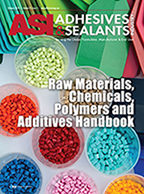2018 Raw Materials, Chemicals, Polymers and Additives Handbook
Our supplier index, and resource that defines materials used to manufacture adhesives and sealants.
Read More

Copyright ©2024. All Rights Reserved BNP Media.
Design, CMS, Hosting & Web Development :: ePublishing